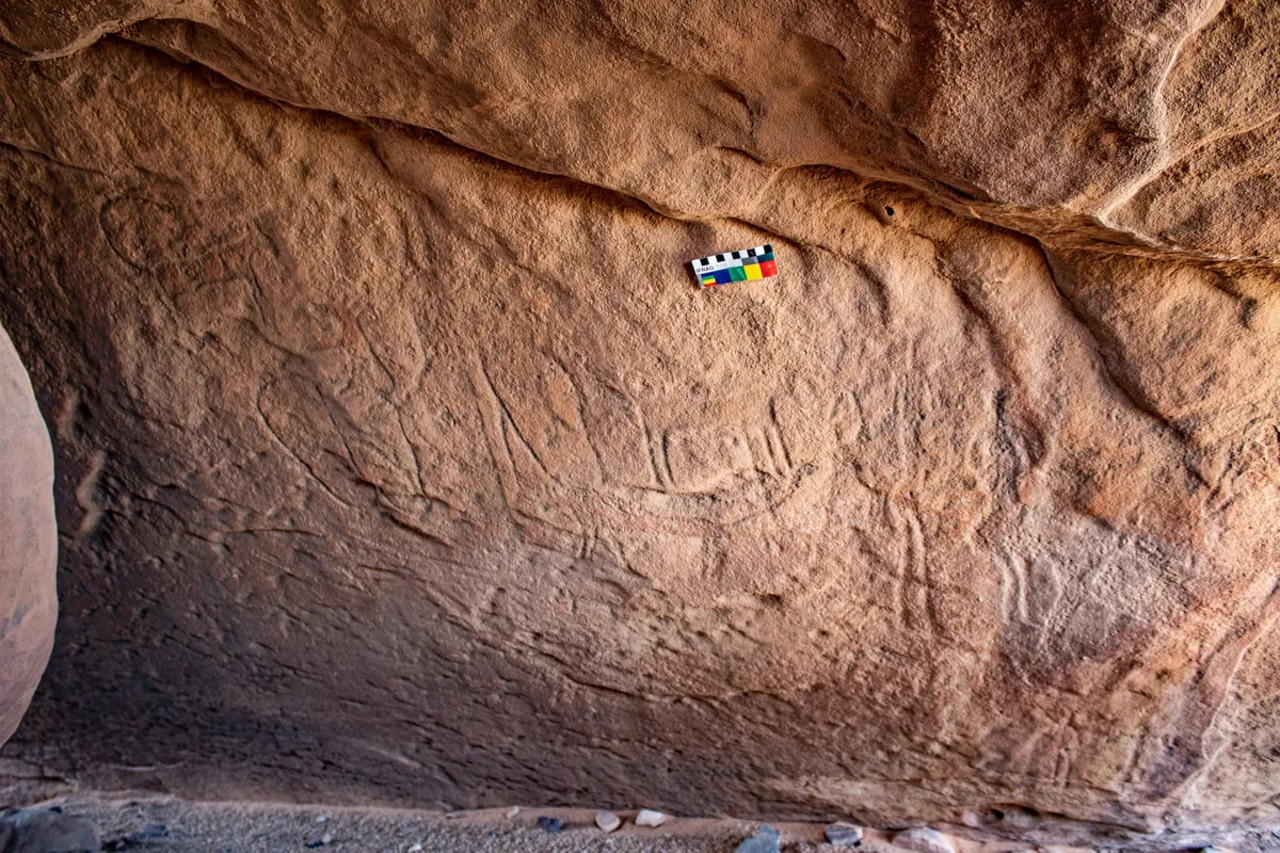There is a lot we don’t know about the nomadic peoples who lived in Saudi Arabia before the Neolithic period. We know that there are magnificent monumental stone structures and accompanying cave art from this period, as well as remains of hearths that indicate periodic settlement, but we don’t know much else. Now, researchers have discovered mysterious cave carvings that provide new insight into this ancient history.
The carvings were discovered on a rock outcrop near the southern edge of the Nafud desert in northern Saudi Arabia. So far, nine life-size camel specimens have been identified in five panels. In many examples, camels were carved on top of other camels or had their features and proportions enhanced, indicating that the site had been used and revisited over a long period of time.
The animals depicted in these carvings are thought to be a type of wild camel that is now extinct but roamed the deserts thousands of years ago. We don’t know much about them because scientists haven’t given a name to this lost species to date. However, the artwork is quite detailed and predominantly shows male camels that have not molted, with their thicker winter fur. These details alone suggest that the art may have been painted during the animal’s estrus period (between November and March).
Cave art occurs at a site called Sahout, which has been known to archaeologists for some time, but camel carvings were hidden until recently. This is where the work of Maria Guagnin, a postdoctoral researcher at the Max Planck Institute for Geoanthropology, and her colleagues comes into play.

According to radiocarbon dating analysis of two trenches and two nearby ancient hearths, the Sahout site was visited several times during the so-called late Pleistocene period (2.6 million to about 11,700 years ago) and the middle Holocene (7,000 to 5,000 years ago).
There aren’t many archaeological sites dating to this early period, so rock art like this could help researchers find similar ones for comparison in the future. Although more research is needed to determine the significance of the camels at Sahout, Guagnin has already made connections between these examples and others.
“There are also many 2D panels and many panels containing later/Neolithic rock art,” Guagnin said in a statement. “This allowed us, for the first time, to associate a site with the Camel Site reliefs, as well as Neolithic rock art sites such as Jubbah and Shuwaymis. “It helps us understand how old a rock art phase might be. This mix of different styles is also our first clue that large camel engravings may be older than the Neolithic Age.”